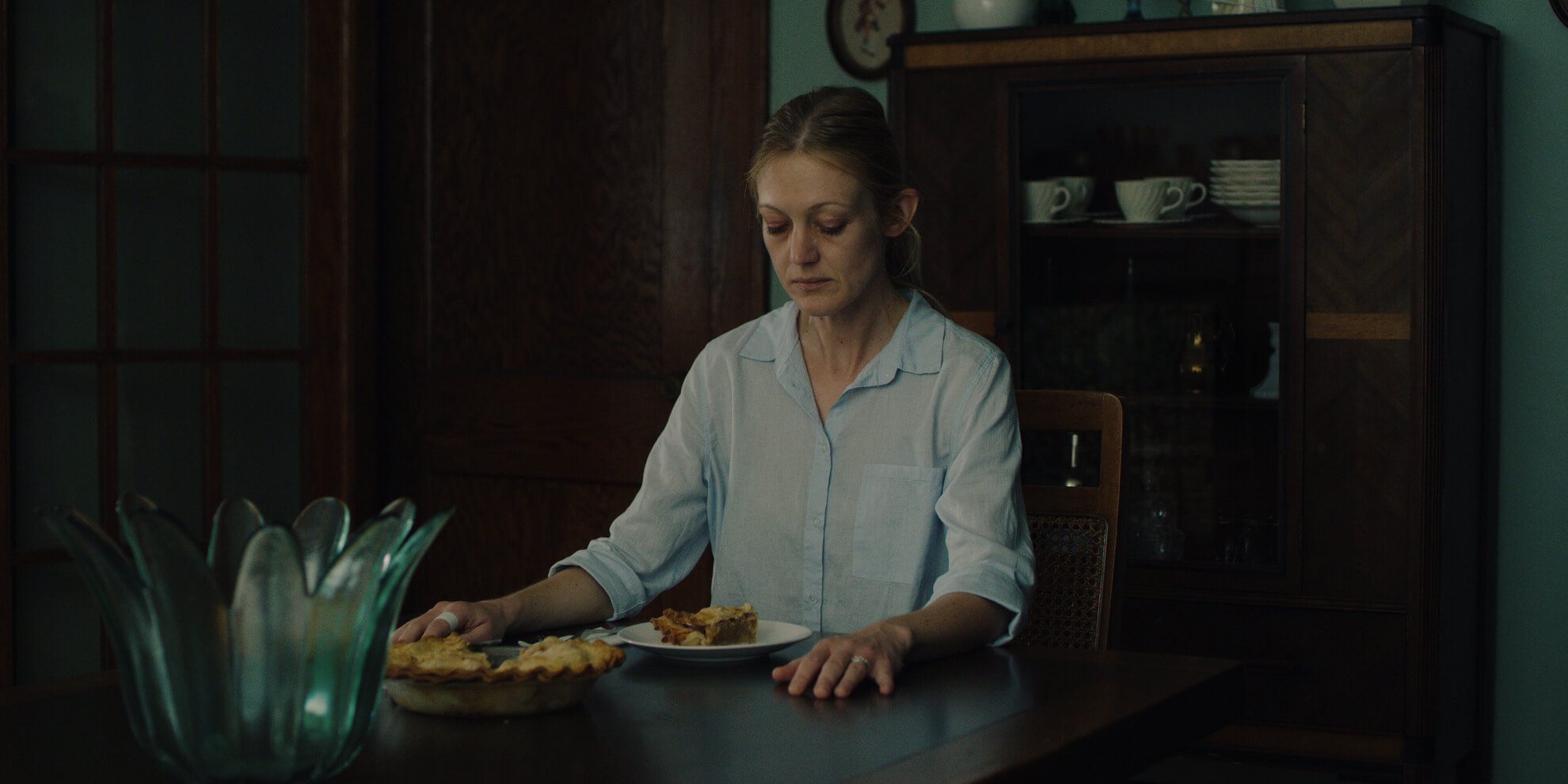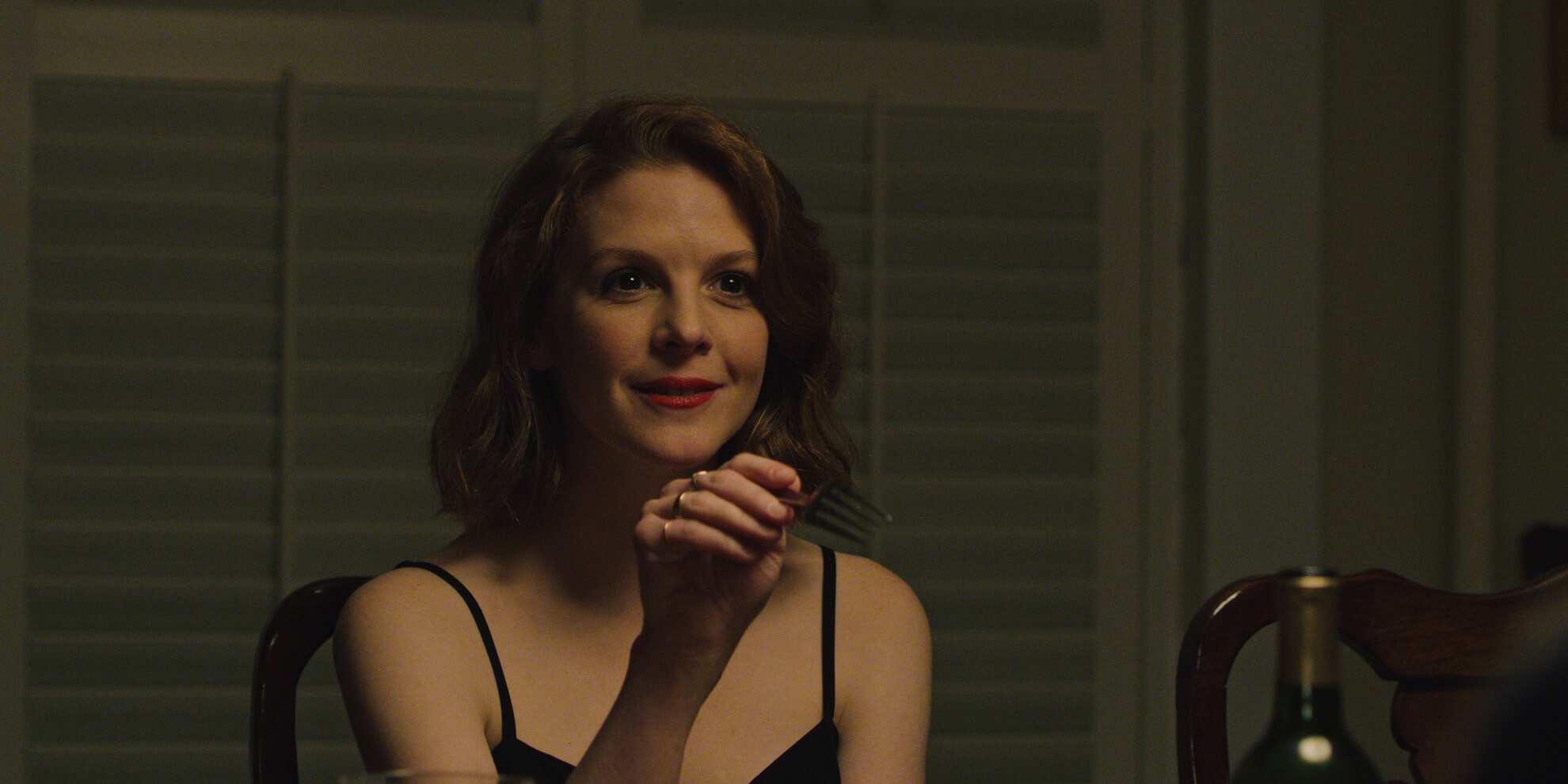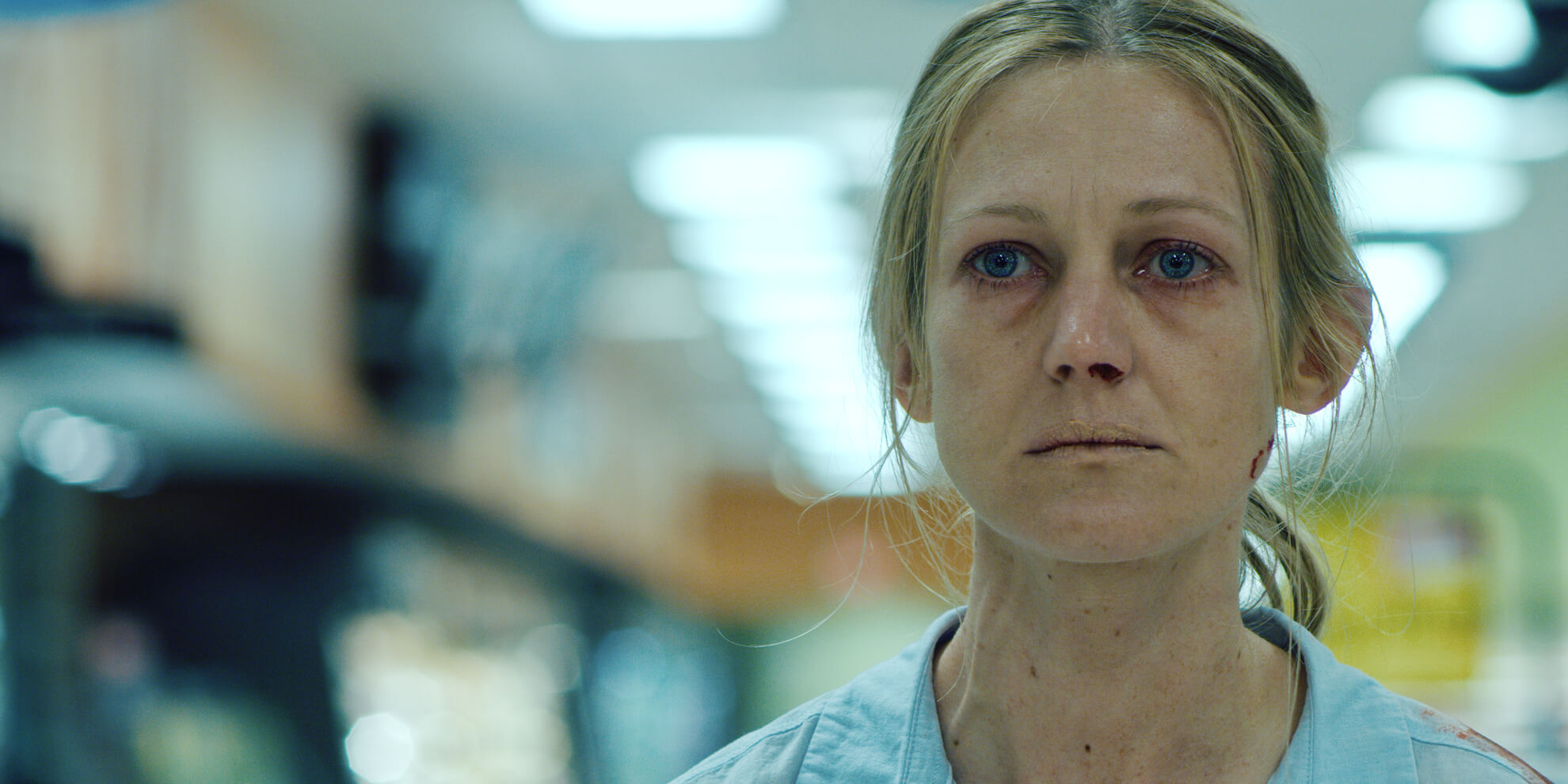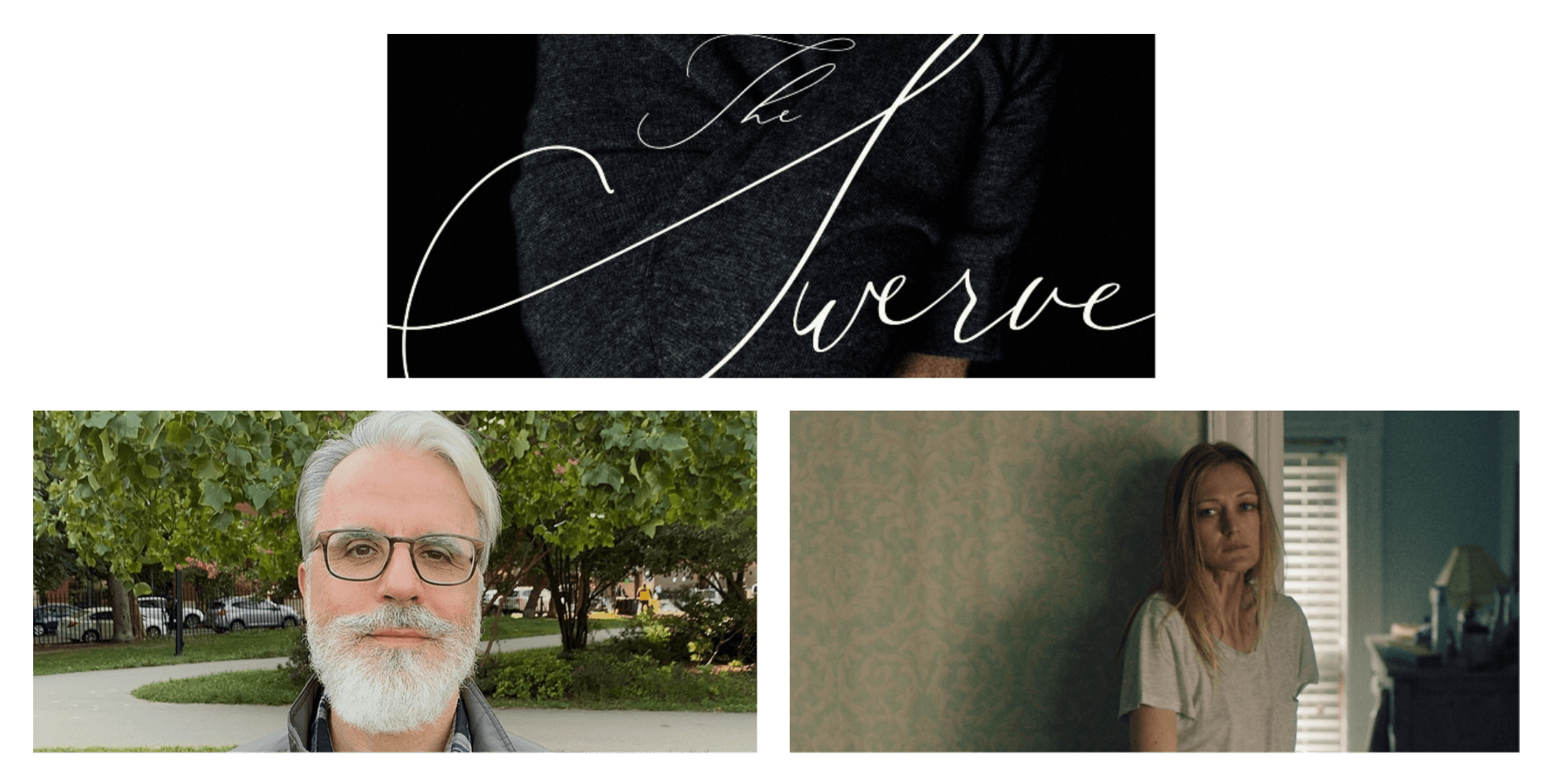After a car accident, Holly’s (Azura Skye) seemingly perfect life starts to crumble, leaving pieces of her former self on the side of the road. She begins to fold under the pressures of motherhood and marriage in this bleak adaption of the American Dream. Dean Kapsalis’ feature film debut is a slow burn with a finale that leaves you speechless. The Swerve is available to watch via VOD/Digital now.

Photos Courtesy of Epic Pictures
During the development phase, you were given the advice: Don’t wait for permission. If you want to get your film made, do it yourself with who and what you have available. So, who/what did you have available, and how did you get your project off the ground?
Originally, I planned to shoot in the New York area where I was raised, but that proved to be prohibitively expensive and didn’t have the exact type of winding road needed for a key night scene. The film’s producer, Tommy Minnix, brought me to the area he was from in southwest Virginia, and it was perfect. Because of Tommy, we got assistance from the National Parks Service and other locations that would have been extremely difficult, if not impossible, to attain on a small budget. Friends and family pitched in to help and much of the crew were local film school students.
What was the writing process like for The Swerve?
The screenplay began from a sketch of a distressed woman in a supermarket at midnight, so the entire screenplay was motivated by this character. The original drafts were more melodramatic, but that was my way of digging out character background and story elements. It was a woman writer at a screenwriting lab who sensed what I was going for and encouraged me to go in that direction. I’m of the mindset that every scene and every line in a screenplay carries weight and meaning, so that was always a consideration.
How was it stepping into the headspace of a female protagonist?
It wasn’t difficult. In society, men and women are treated completely differently, so I just had to plug into my memory of observation, experience, and empathy to bring out her voice.

Why did you want to tell this particular story?
I was raised around strong women. As I grew, I began to see the emotional and physical scars they carried from mental illness and abuse, both emotional and physical. My observations and experiences lodged in my psyche until they were ready to appear in the character of Holly.
How did Greek mythology and tragedy inspire you?
I always loved mythology, but in college, I had to take an elective to fulfill graduation requirements, so I reluctantly opted for a year-long study of tragedies in play and literature. Surprisingly, it turned out to be my favorite course ever. Through my studies, I discovered that humans have not emotionally changed in the time since they were written. They still work as cautionary tales and as great drama, full of characterization, metaphors, conflict, and shocking violence.
The acting was great across the board, with the obvious standout being Azura Skye. Was there anything you all did on set to lighten the mood/recenter yourselves after filming the heavy scenes?
Hard to believe, but the set was pretty light in mood. I have a sense of playfulness and humor, too, and it actively came out. Prior to all scenes, we had conversations about the emotion and physicality, and I was extremely precise in what was needed. The actors are all pros and have been in the profession since they were kids, so they each had a different way to recenter. Also, the actors loved sinking their teeth into the heavy scenes.

How was the process of working with cinematographer Daryl Pittman on the aesthetics for The Swerve?
The process began with the type of atmosphere I wanted to capture, then progressed to perspective, and why I wanted to shoot in a scope aspect ratio and, of course, lenses. Camera movement and blocking were also key. An important instruction was to always have catchlights to capture the highlights in the eyes of the actors, especially at night. Daryl always wanted the lighting to be motivational and practical, so he had to figure out ways to get certain colors I wanted into a scene and from which source it would originate. For instance, yellow figures prominently in the last third of the film.
I noticed a lot of American motifs within the film; lots of flags, the apple pies (a Western classic), coupled with Holly's unraveling. What most do you want audiences to take away from this American Dream gone wrong? [Is it weird that I craved apple pie after watching this?]
Thanks for noticing the American flags. Each one was placed with intention. Like the flags, apple pies are associated with wholesomeness and tradition, but rather than the American Dream gone wrong, I was pointing at the reigning patriarchy that continues to constrain, and Holly’s relationship to and deviation from it. Of course, the film’s title can be seen as literal, but it’s also highly metaphorical. By the way, your craving for apple pie seems natural. They were baked with hand-rolled crusts by the talented art director.
Which films/directors have had the most impact on your filmmaking, on The Swerve, and why?
I have a background in the arts, so I think I naturally gravitate toward pure visual storytelling and how the camera acts as both narrator and participant. Hitchcock, Murnau, Kubrick, Polanski, Bergman, Bigelow, Antonioni, De Palma are all masters of the form. Their visual obsessions and the use of filmic language from film to film can be extremely emotional for me.
A point of trivia from The Swerve: In a key scene, a zoom lens was used. Daryl knew Kubrick is a favorite of mine, so he acquired the same type of lens used in Barry Lyndon. It was enormous and needed an assistant to guide it as it panned so as not to take down the body of the camera!

